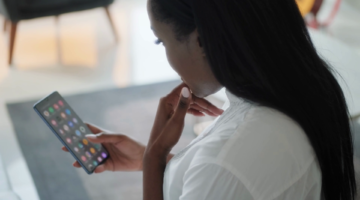 I was about 11 or 12 when my uncle Bob began riding me around New York City on the back of his decked-out Harley-Davidson “Hog.” He started me off with short rides around our Harlem neighborhood and later through Central Park and still later across the George Washington Bridge to New Jersey and back.
I was about 11 or 12 when my uncle Bob began riding me around New York City on the back of his decked-out Harley-Davidson “Hog.” He started me off with short rides around our Harlem neighborhood and later through Central Park and still later across the George Washington Bridge to New Jersey and back.
Uncle Bob always had a gleaming Harley and he wore goggles, black boots, riding pants, cap, gloves and, except for summertime, a black leather jacket and white silk scarf. Uncle Bob walked with a cane into his early 80s still riding a Harley around Harlem. He only stopped riding to pass away.
Harley-Davidson motorcycles have been around since a 1903 beginning in Milwaukee, Wisconsin, when William S. Harley, Arthur, Walter and William Davidson built their first bikes in a tool shed. By 1920, the young business had become the largest motorcycle manufacturer in the world.
During the 1920s, in Somers, N.Y., William B. Johnson became the first African-American Harley-Davidson dealer. Johnson had been a chauffeur and handyman who converted a blacksmith shop on his property into Johnson’s Harley-Davidson where he operated the business for 60 years. Johnson achieved another first by being an African American licensed to compete in segregated national motorcycle racing events. (He was allowed in by claiming to be American Indian.)
A decade later, during the 1930s and ’40s, when white nationalism was at its height of rampant discrimination and violence against African Americans, a self-assured black woman took eight long-distance solo rides, through all 48 of the then United States on her various Harley-Davidson motorcycles. Bessie Stringfield’s feats began when, as a 19 year-old, she rode her Harley cross-country, alone. She slept at black rooming houses and sometimes on her bike.
Stringfield was born in Kingston, Jamaica, in 1911 and was orphaned at age 5 in Boston, Mass. where she was adopted by a wealthy white couple. At 16, she got her first motorcycle, a 1928 Harley-Davidson Indian Scout. By the late 1930s, Stringfield had moved to Miami Fla., where she founded the Iron Horse Motorcycle Club. She is said to have ridden for 63 years and had owned 27 Harley-Davidson bikes, “always blue, and always new.”
While the Industrial Revolution spawned young Harley and the Davidson brothers – in their 20s when they launched the company back in 1903 – America was engrossed in ensuring that people of African descent be disallowed participation in capitalist endeavors. But it did not take long before African Americans took to Harley-Davidson motorcycles and began creating their own styles, what the industry now calls “customizing.”
Remember that baaad chopper called “Captain America” that Peter Fonda rode in the hip 1969 movie Easy Rider? That motorcycle design was the creation of Ben Hardy, an African American said to be the greatest of custom bike builders. Hardy, who died in 1994 unrecognized for his extraordinary skills as a motorcycle engineer and chopper builder, reconfigured 20-year-old Harley-Davidsons and customized them for the film.
From his shop in the Watts area of Los Angeles, Hardy and Cliff Vaughs, also an African-American builder, created three “Captain Americas” for Fonda and two “Billy” bikes for co-star Dennis Hopper, the film’s director. Fonda and Hopper’s characters are killed and the “Captain America” chopper is destroyed as the film ends. However, all of the remaining choppers conveniently disappeared, apparently stolen from the movie set.
For some time, what also disappeared as history was any mention of Hardy and Vaughs. Hopper went to his grave not crediting the men and Fonda is alleged to have denied that Hardy designed the bikes and with Vaughs as coordinator built the famous choppers. But the Harley-Davidson museum in Milwaukee not only has a replica of “Captain America” on display, it also rightfully credits the original design and build to Ben Hardy.
All this year, Harley-Davidson is celebrating its 110th anniversary across the globe culminating in a big four-day bash in Milwaukee, beginning Aug. 29. Harley biker club members from all over will be among the thousands expected to rumble into town in full regalia for the party, including black clubs from Southern California to Florida and up to New England and Canada.
I was one of five African-American journalists invited out to Harley-Davidson headquarters in Milwaukee last fall as company personnel prepared for the 2013 celebration. The three women in our group represented black media in Houston, Texas, Detroit, Michigan and Baltimore, Maryland. A managing editor from Dallas, Texas, and I completed the team that spent two full days all over Harley-Davidson history and through some future plans and bike designs.
Noticeable at first and later indelibly locked in the mind’s eye is that African Americans and other people of color are everywhere at Harley-Davidson, at company headquarters, the museum and the non-public design center to which we were allowed limited access. There are engineers, designers, marketing directors, trainers and administrators, ad infinitum.
Harley-Davidson’s museum will knock your socks off. We could have spent the two days right there. The place houses a chronological history of Harleys with actual bikes from 1903 to the present. There are also many photographs and scores of printed historical information. And there you also see the long history of Harley-Davidson and African-American riders and innovators.
There is an informative on-line site called “Iron Elite” created by the Harley-Davidson company honoring the heritage of African-American Harley riders, their clubs and extraordinary bike customizing.
*Pictured above is Bessie Stringfield.












No Comment